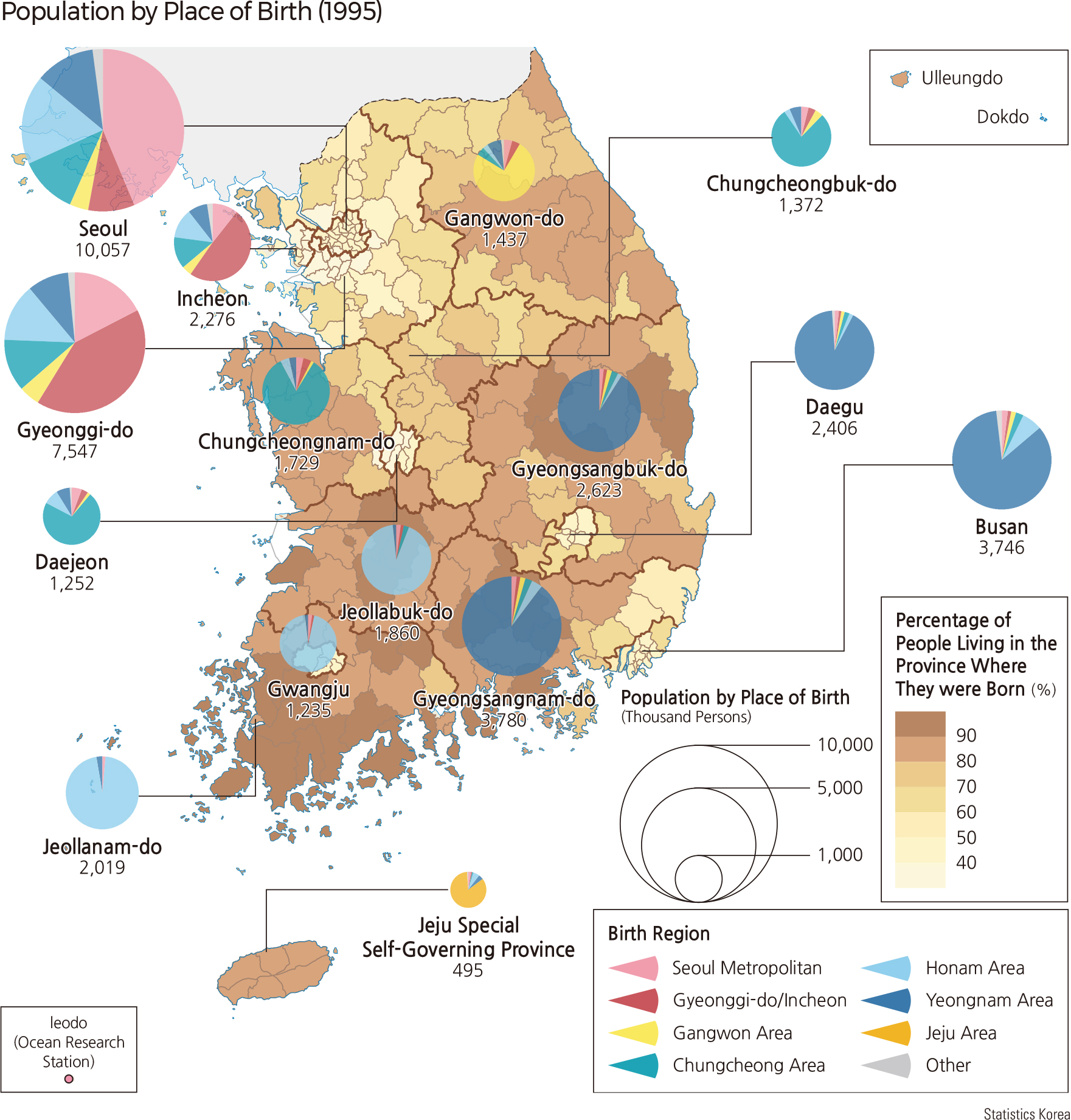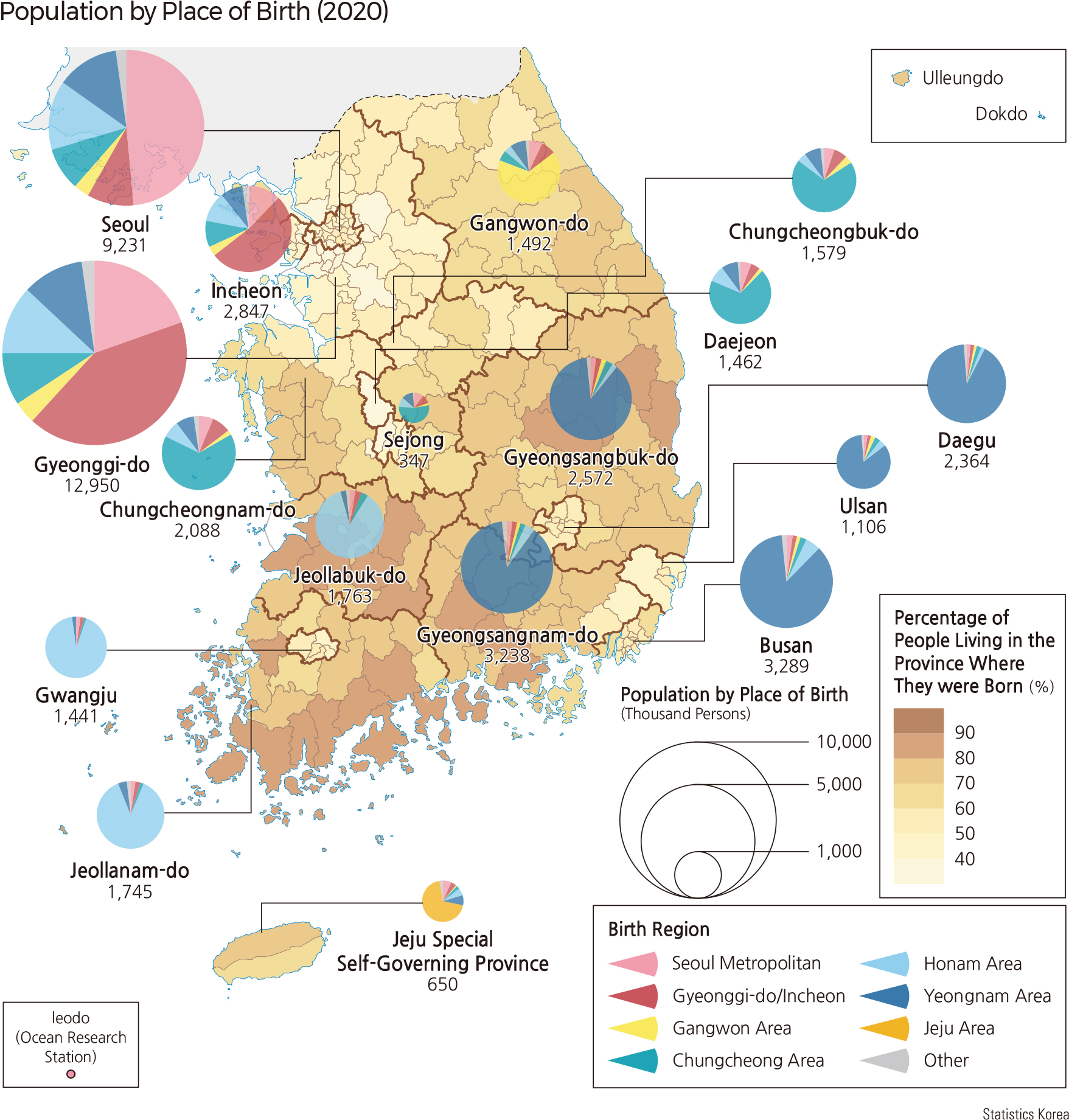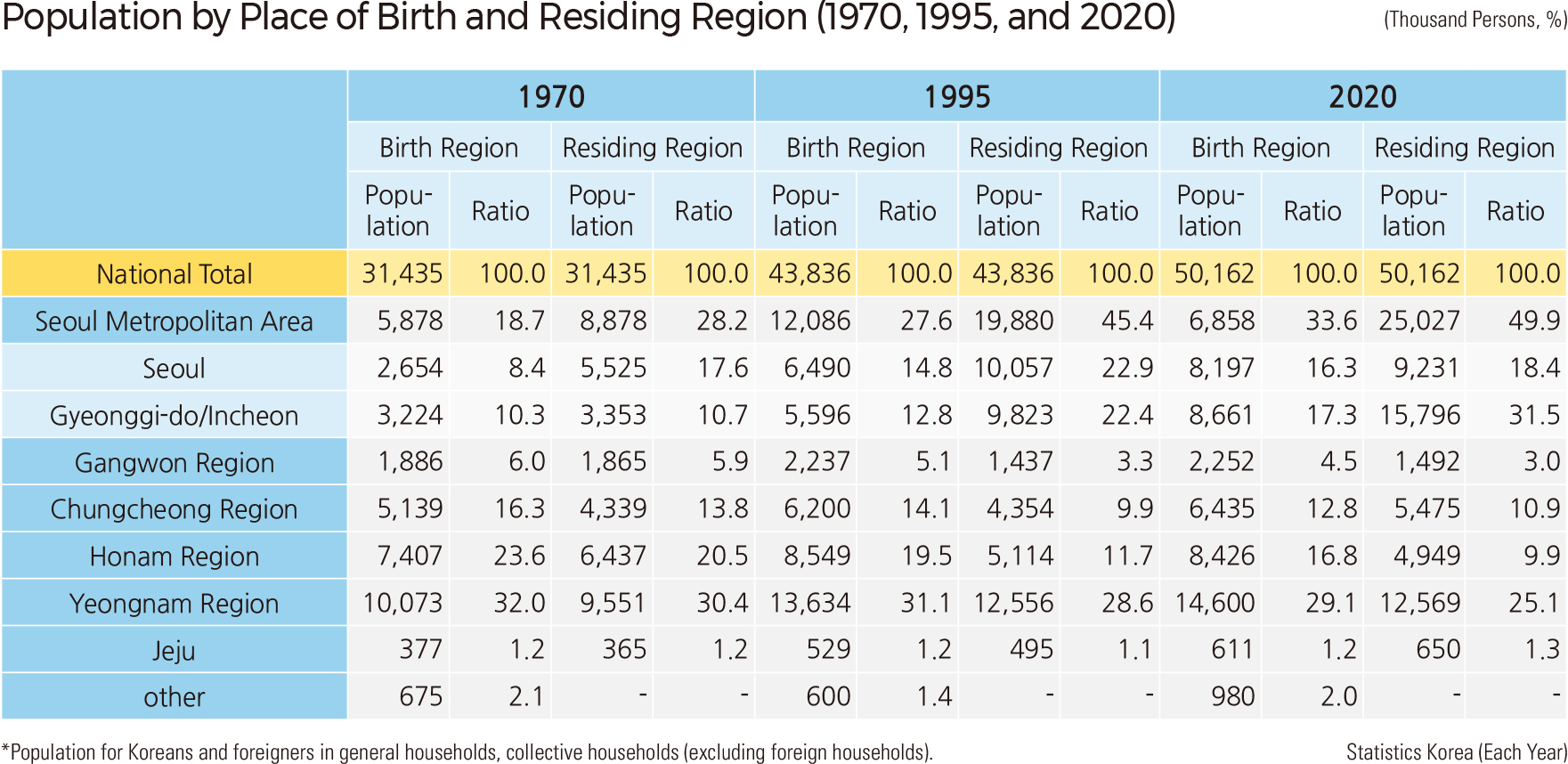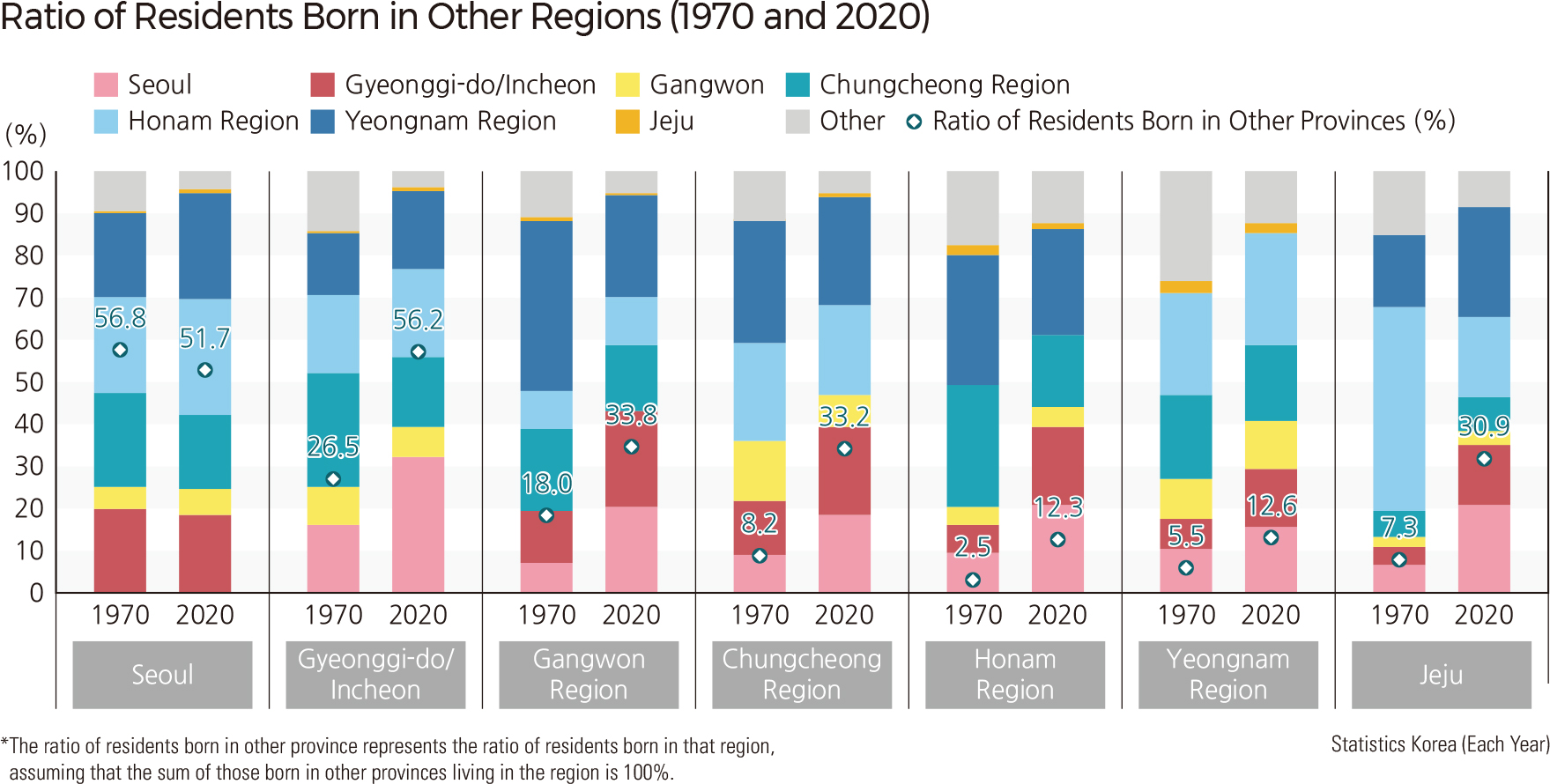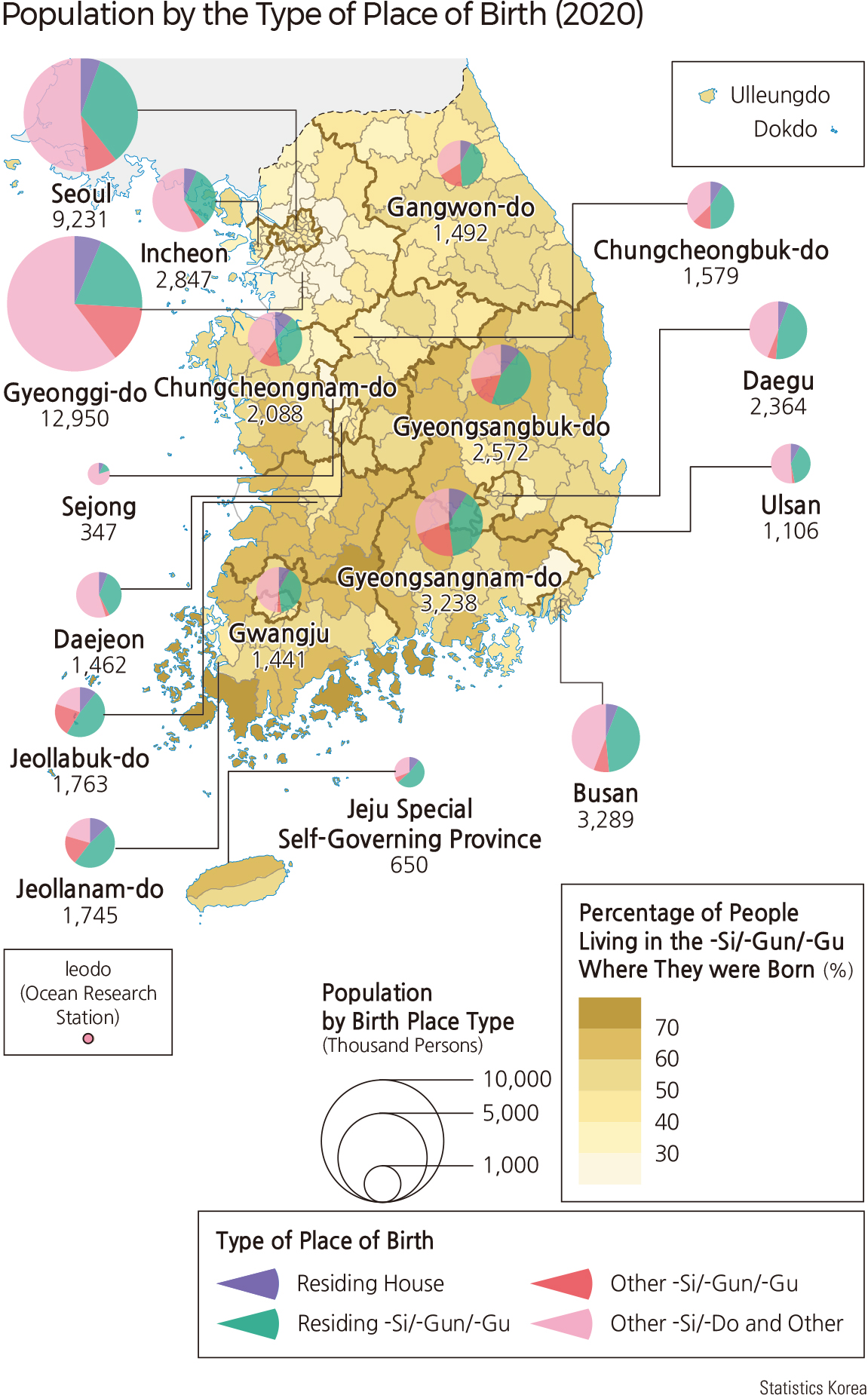English III 2021
Due to population migration, there is a significant difference between the population based on the place of birth and the population based on the place of residence. For example, in 1970, only 18.7% of Korean residents had been born in the Seoul Metropolitan Area, but 28.2% of Korean residents lived in the Seoul Metropolitan Area. In particular, the proportion of people living in Seoul (17.6%) was more than double that of those born in Seoul (8.4%), indicating that Seoul was a destination for population migration. In 2020, 50 years later, the proportion of people born in the Seoul Metropolitan Area increased to 33.6%, and the proportion of people living in the Seoul Metropolitan Area reached 49.9%. On the other hand, as of 1970, the proportion of people born in the Honam region was 23.6%, the second highest after those born in the Yeongnam region. However, in 2020, it decreased to 16.8%, similar to the proportion of people born in Seoul (16.3%). In addition, the proportion of people living in the Honam region in 2020 has decreased to 9.9%, indicating that about 41% of people born in the Honam region are living in other areas. By region, in 1970 and 2020, the proportion of people born in other regions among residents increased in all regions except Seoul, where there was a lot of outflow to Gyeonggi-do. As of 2020, the proportion of people born in other regions of Gyeonggi-do and Incheon is over 50%, and the proportion of people born in other regions in Gangwon-do, Chungcheongbuk-do, Chungcheongnam-do, and Jeju Special Self-Governing Province is in the 30% range, while the Honam and Yeongnam regions are in the 10% range. The population composition by place of birth can explain the characteristics of the regional population migration of a region. For example, the proportion of those born in the Honam and Yeongnam regions increased in the Seoul Metropolitan Area. The proportion of those born in Seoul increased rapidly in Gyeonggi-do and Incheon. In the case of other regions, the proportion of those born in neighboring -si/-do areas was high in 1970, but the proportion of those born in the Seoul Metropolitan Area was high in 2020. Even at the -si/-gun/-gu area levels, there is a clear pattern of differences in place of birth and residence. In 1995, 40% (92 of 232 -si/-gun/-gu areas nationwide) had more than 80% of births in -si/-do areas to which the municipalities belong. However, in 2020, the percentage was reduced to 12% (28 of 229 -si/-gun/-gu areas nationwide). Nationwide, the proportion of people born in -si/-do areas to which -si/-gun/-gu areas belong has decreased, and it can be seen that these regions are spatially expanding around the Seoul Metropolitan Area, Sejong, and other metropolitan cities. By birthplace type, as of 2020, most people were born in other -si/-do areas, followed by the residing in the -si/-gun/-gu areas within the residing in the -si/-do areas and other -si/-gun/-gu areas within residing in the -si/-do areas. The proportion of people residing in -si/-gun/-gu areas where they were born is low in -dong areas and high in the -myeon areas. However, the change in the proportion shows an opposite trend—the proportion of people residing in -dong areas increases, but the proportion in the -myeon areas decreases. The declining proportion in the -myeon areas is attributed to an increase in the number of deaths among the elderly, and the rising proportion in -dong areas shows that the proportion of births in urban areas is higher than in the past.
|
